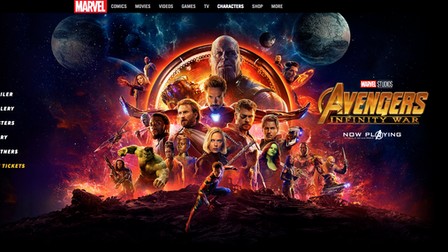

PROBLEM SOLVING/ DEVELOPMENT
JOURNAL
research JOURNAL entries
EXPERIMENTATION
Experimentation is 'the action or process of trying out new ideas, methods, or activities.' (Autumn Floods, 2018)
In film, experimentation can range from practicing camera techniques to different editing techniques or even different kinds of cameras being used. Experimenting allows you to practice the element that you wish to include in your production and allows you to practice it multiple times before performing it for the final production. This process allows you to re-evaluate your work and come up with alternatives if the experiment didn't go to plan, being able to avoid the same issues arising once again.
For this project the experimentation will be used to practice camera techniques and will start to implement some experimental filming with the cast and some rough edits. I will also carry out script reading and performances with the cast before starting to film the project in full, leaving enough time to edit and re-film if any shots do not work the way I wished them to. I have carried out different experimentation in the past that can also be implemented for this project, being able to take them and use them in such a fashion to re-evaluate and update my techniques for this production.
Reference: Autumn Floods. (2018). Experimentation in Film-Making: The Ocean of Human Existence. [online] Available at: http://autumnfloods.com/2016/03/30/experimentation-in-film-making-the-ocean-of-human-existence/ [Accessed 21 Mar. 2018].
TWO TIED THIEVES NEWS SCENE
ROBOTICS (SHORT FILM)
COLOUR GRADING EXPERIMENT
The news scene from my stylistic challenge, 'Two Tied Thieves', allowed me to learn how to create the news banner that appears across the bottom of the screen and how to fill it with the information relating to my story line, being something that I hadn't done before this project. I also learnt the software in after affects much better than I knew it before and understood the tools available to me to create this, being able to use this past experimentation in this production as I wish to make another news report scene, this being a good example of one I have already completed. I had some issues understanding some of the steps but would go back and re-watch them to understand the steps better than I did before, making sure that I wouldn't make the same mistakes, this production allowing me to go back over the information that I didn't understand and can use it more effectively.
A short film that I completed in my spare time called 'Robotics' which was an experiment to see if it was possible to provoke emotion to the audience from a first person view and could get a point across without any need to establishing shots. This experimentation also was to see if you could provoke emotion in the audience without any words, being a different technique to those that I have used before. This experimentation allowed me to experiment with the camera in different ways to which I would normally use it, being able to gain knowledge on provoking emotion in the audience and how this could be completed through a first person view.
Recently I carried out an experiment with colour grading and colour correction to gather better information on the subject and how it can influence a scene. I learnt that colour correction is the primary colour changing for any kind of clip. This makes the image look more natural and gather the correct colours such as the skin colours. It focuses heavily on the amount of light in the colours of the image meanwhile, colour grading focuses on the actual colours in the image, allowing you to alter the colours by balancing the red, greens and blues in the image. Colour correction changes the lighting and colour grading enhances the colours in the image.
These past experiments will be important to this production as they will influence many of the choices that I will make to use in this production, being able to take these past experiments and adapt them to work more professionally in this video. They will be implemented into this production and are deemed important in being able to plan and carry on to future experiments that I will carry out, being able to help determine which camera shots and techniques I shall carry over or adapt.
SNOW DAY
DREAM TRANSITION
CREDITS
Snow day uses a song that I want to implement into the final production of my video, this video presenting the song and allowing me to get a feel to how it feels to edit to. The song is called 'Dreamland' by White Sand. This song is calm but continues to grip the audience as it sparks imagination into the audience that listens to it, provoking emotions in the audience from the beginning. I chose this song as it would be good for calmer parts of the video as it is more emotional and can be used to provoke emotion in the audience when characters are talking. The song also works well with cinematic shots and is easy to edit to, being smooth and calm that the shots can transition nicely between them. Dreamland also flows nicely off of Epic Cinematic Dreams Music, being how I want it to work and the order that I will use them, this being the perfect match to the song beforehand.
The dream transition is an experiment to see whether a blurred effect would work for transitioning between two clips, making it clearer to the audience when the characters are moving between their dreams or their reality. Many from my questionnaire about my concept for this video said that they thought it would be difficult to follow and would have to have a clear distinction between the dreams and real life, which I was aware of, but allows me to work on this to make it clearer and easily noticeable to the audience, this being one technique which can be used to do so.
I also experimented with the credits, wondering how they would look and whether it would be long enough to do rolling credits. With writing down all of the names and the music I plan to use, I was able to see how the credits looked and to understand the length of it, adding in the logos at the beginning and the end. With this I know how it looks and can continue to alter the credits when I edit if more is added or taken off, this giving me an oversight to understand that these credits work but could still be improved throughout the post-production of my project.
CREDITS WITH MUSIC
SCRIPT READING
L AND J CUTS
With the change in the actors and music having been chosen, I went back and added the music along with spacing out the logos and text better throughout the credit sequence, making it feel and roll more naturally without being too close together or disheveled. With the music the length of the credits make sense and work well for the amount of time that I plan to make the film for, being able to see this working well being helpful in the editing process. The music also fits with the credits, fitting well with what I want the audience to feel at the end of the short film and I also shown the music used beforehand to show how well the music flows between each other.
The four actors arrived at 1pm and stayed until 2pm, practicing their lines and giving me time to explain their roles and the story in better detail. This video shows 10 minutes of the script reading and the skills of the four actors, this being important for me to understand the tones in their voices and how they act. This was also important as it allowed me to get to know the actors and to understand them better, myself seeing that they have skills in acting but they were all nervous on the day. This was experimenting with the lines for the actors, allowing them to get used to my writing and the style of how their characters talk. This worked well for them as they could all practice in the same room and gain feedback from myself if they messed up or allowed me to explain certain lines or changes in scenes.
I did an edit to show how to create the cuts, the first edit I do being an L cut and the second being a J cut. I used some of the running clips from Two Tied Thieves to show how well the audio can be blended between each other and how smoothly the audio can be transitioned. I used audio with similar wavelengths as it makes it flow smoother between the two clips and becomes less recognizable than those with two completely different audio wavelengths. With being able to perform J and L cuts, the editing between two shots can become a lot more natural and smoother to the audience, becoming almost discrete to the audience that the audio is from the previous clip as they blend together well.
UPDATED CREDITS
INTRODUCTION
I went back to the credits, changing up the actors as Charlie can no longer act in the short film and I spaced the words accordingly, making the spacing more acceptable and easy to read for the audience. I also added people to the Special thanks to show those that have helped me with the project and have influence in the film. I listed all of the songs and changed the way that my logo comes in, fading in rather than scrolling up afterwards with the text. This felt more professional and worked better overall, making the credits feel more like a professional production team.
Along with the credits I experimented with the introduction and the music that I want to use, allowing me to get a feel of the video and what clips would work well afterwards and what would flow naturally. I decided to put in the 'presents' as if it was made by the flash of the logo, making it different and visually interesting to the audience whilst still working with the music. I think that the two songs chosen for the introduction and the credits round up well and show the development throughout the film, making them match up well.
In this video, I explain how 180 degrees rule is where one person is placed on the left of the screen, vice versa for the second person, and how this is how the audience views the people on the screen. Then I explain how 180 degrees can be broken if the two people are now on opposite sides. This can confuse the audience on where the people now are in the scene as they would now be on the wrong side of the screen to the audience. The rule can be broken successfully with a tracking shot to show the audience where the people now are in a scene and why they are now on opposite sides of the screen. This is important as it shows where the people are standing in the frame, making the audience aware of this, something that will be important to get correct during the conversation scenes of this short film.
NEWS INTRO
FIRST EDIT
I spent the day developing a news scene introduction, researching the music and trying to make it look as realistic as possible to that of a real news report. I followed a tutorial to complete the scene overall, using after effects to create the visuals before the actual news scene which is to be recorded. I found music that I believed matched the tone that I wanted to create and used this with the visuals, allowing it to match to a similar style to what I wanted to create. This will drag in the audiences attention and will be an easy transitional tool for the scene I wish to use this in, showing this experimentation was important to understand the tone I was creating. With this made it can be used in the final production to help develop the story to the audience and to show the World in better detail to them, letting the audience get a peek at the World the characters live in.
Editing went very smoothly as I edited in sections by the different scenes and put them together in the sequence. I preferred doing it this way as it allowed me to focus on the scenes separately, fixing the audio and the colour correction before focusing on a different scene and repeating the same process. This allowed me to focus on the transitions between the scenes afterwards, which were more of an issue as I didn't have the correct footage to work well for the transitions but managed to use effects to complete the same effect. Between the reality and dream sequences, I used a png of lights over the top of the top of the footage, making the transition blur between the shots and using a ringing sound effect. This allows the audience to know the transition between reality and dreams throughout the film and what effect it is having on the reality. The music I chose throughout is to represent the tone of the scene, allowing the audience to use the music as guidance to the storyline. There were some issues with the lighting, not being able to fix them completely in editing as it would of made the shot worse so there are some issues throughout on the lighting of the scenes. The lighting was the biggest issues as there were no issues with sound during filming that I couldn't fix in editing, being able to alter the audio levels and putting in background noise to cancel out the odd noises that I didn't want to be audible to the audience.























